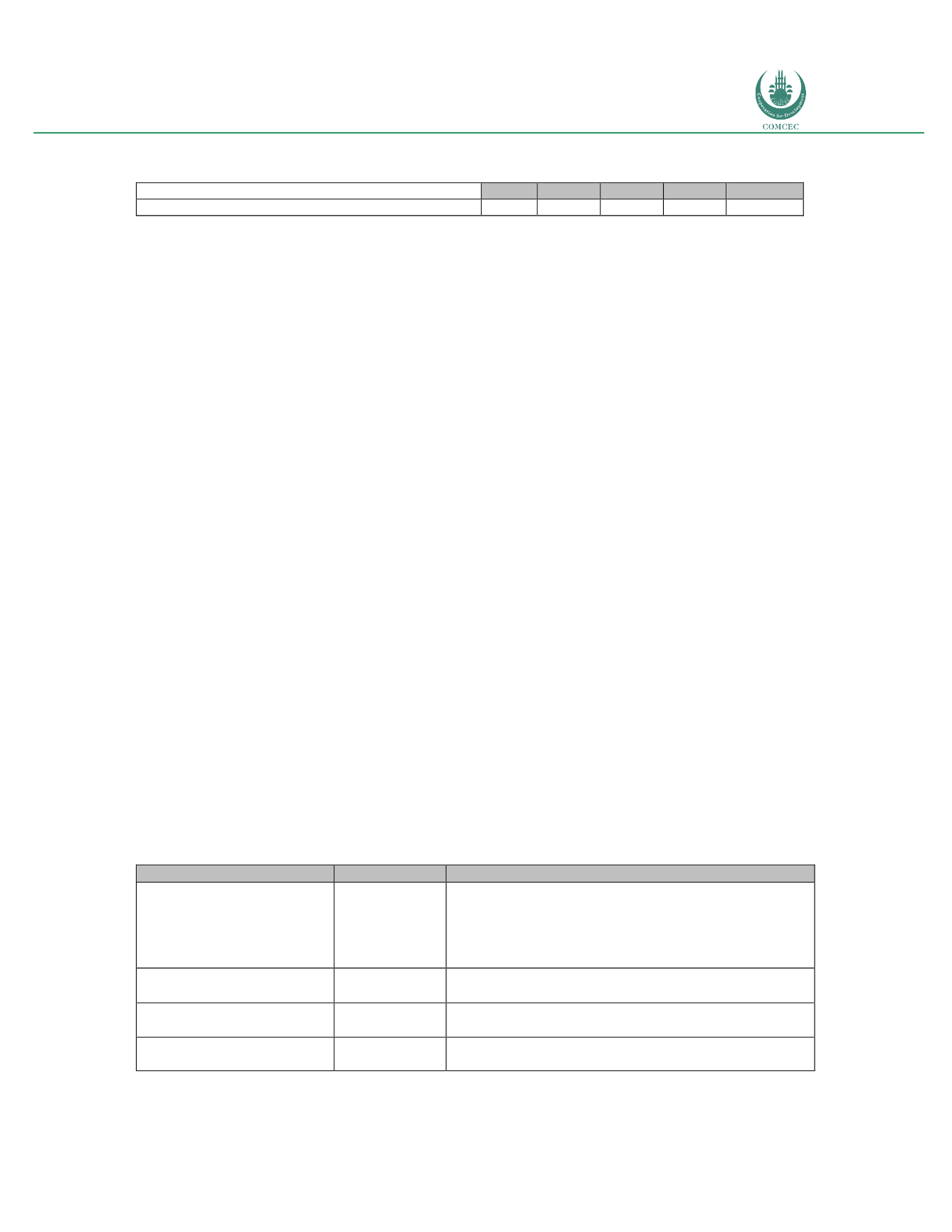

Increasing Broadband Internet Penetration
In the OIC Member Countries
133
Table 72: Saudi Arabia: Incremental FTTH Supply (Homes passed ‘000) (2011-2015)
2011 2012 2013 2014
2015
Incremental Homes Passed
100
300
430
570
300
Source: Analysis Mason
Major factors that influence broadband investments
The encouragement of broadband infrastructure spending is driven by the Kingdom’s 2030
vision which sets clear and ambitious targets for the economy, with implications for
broadband networks, in particular last mile fiber optic and LTE.
However, in the short term broadband capital spending in the Kingdom is constrained by three
regulatory factors. First, regulatory price control is affecting the overall retail revenues of the
telecommunications sector, which have declined 2% year-on-year between 2012 and 2015.
Price controls are compounded by ex-ante tariff approvals, which cause revenue stagnation
and diminish operator profitability. For example, mobile broadband revenues have declined
62% between January 2014 and December 2015. Third, the telecommunications industry
contributes a significant amount of royalties to the Treasury, which limits operators’ ability to
invest in infrastructure. These regulatory factors have resulted in capital spending decreases
in three areas:
•
Halt of infrastructure investment in rural areas leaving substantial share of customers
uncovered by last generation technologies;
•
Slowdown in fiber deployment and uptake of high-speed broadband; and
•
Further reduction in network throughput leading to deteriorating customer
experience
V.2.3. Institutional Structure and Policies for Promoting Broadband
Institutional structure, policies and strategies regarding broadband market
The institutional structure guiding the development of broadband is in a process of transition.
In the recent past, the development and management of broadband public policies was
fragmented across a number of agencies and ministries (see table 73).
Table 73: Saudi Arabia: Institutional policy responsibilities
Policy Domain
Initiative
Government Entities
Development and
implementation of e-
Government services
Yesser
•
Ministry of Communication and Information technology
•
Communications and Information Technology
Commission
•
Ministry of Finance
•
Ministry of Interior
Implementation of broadband
wholesale market
Open Access
•
Communications and Information Technology
Commission
Address the digital divide
Universal
Service Fund
•
Communications and Information Technology
Commission
Internet applications
development
Nitaqat
•
Ministry of Labor and Social Development
Source: Telecom Advisory Services
















